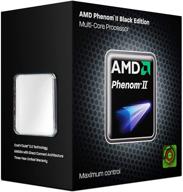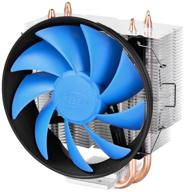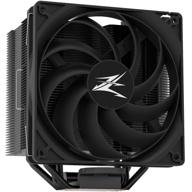
Review on 🔥 Thermalright Thermal Pad 12.8 W/mK, 120x120x0.5mm | Non-Conductive Silicone, High-Temp Resistance | Laptop Heatsink, GPU, CPU, LED Cooler (0.5mm) by Gopal Baltimore

If you don't like this product read my review
First of all I would like to say why I gave this product a 5 star rating and you can apply that rating to all sizes of these pads from this company . Secondly, I will write a short message to those who leave bad reviews, so maybe I can help you guys too. I really like this product. So much so that I have bought this product twice in one size and 3 times in others. I currently have 2 3080 (Gigabyte Aorus Master) and 3090 (TUF Gaming). The 3080's thermally throttled and reached 110°C at the memory transition temperature. I watched some videos online and decided to update the thermal pads on the card and add the missing pads on the back. I measured the thermal pads and ordered the correct sizes from this company. After replacing and adding thermal pads, the memory junction temperature dropped from 110°C to 80°C. Along with the drop in temperature, I was able to increase the memory clock frequency and get normal card functionality. It wasn't without a struggle and I think that's why some people might write a bad review for this product. So, in general, the second part of this review will help those who are struggling. A few things first: Make sure you have a program that can tell you about the three main temperature sensors on the map. GPU temperature, memory junction temperature and hotspot temperature. GPU temperature and memory junction temperature are the two most important parameters as the hotspot temperature is captured by multiple temperature sensors. SCENARIO 1: GPU temperature is good but memory link temperature is high. You replace thermal pads and your GPU temperature increases while the memory interconnect temperature stays high. This problem can have two different causes. First, you replaced the stock thermal pad with an improved thermal pad that is too thick. What happens is you get uneven pressure from the backplate and heatsink. A thicker thermal pad can prevent the heatsink from properly contacting the heatsink, and improper pressure on the thermal pads will also cause the memory junction temperature to rise. FIIX - Find a thermal pad that is too thick and replace it with a thinner one. Several pads may be too thick, so check them all. Another solution to this problem is that the back panel screws are not properly tightened. Tighten them fully, but don't use too much force or you may snap the screws. Scenario 2: Same as the first, except you get good memory junction temperatures when testing your GPU, but your GPU and hotspot temperatures are elevated. . This issue occurs when even pressure is applied to the thermal pads because the memory junction temperature is low, but the heatsink is not making proper contact with the GPU, causing the GPU temperature to rise. The solution to this problem is almost the same as above with a few exceptions. First check the rear panel screws. Also this solution can be that easy and yes it happened to me twice on 3080s. The first time I ripped the card and put it back together it worked perfectly. During disassembly I noticed that the two spring screws (M2x7mm) were quite loose. When I reassembled it, I stopped changing thermal pads, just double-checked that the back panel screws were properly tightened. In the first test, the GPU temperature was 46 °C and the Mem Junc temps were 76 °C. Excellent. I had the same problem with the second 3080 and before taking it apart I checked the screws and sure enough one of them was loose. Screw tightened and the temperature dropped immediately. If you now check the backplate/heatsink screws and they are all tight, you may have a second problem. This problem is that all the pads are too thick either on the back of the card or on the front of the card or on both sides. If the memory temperature is low and the GPU temperature is high, the new thermal pads may be too thick and the heatsink is not making contact with the GPU. This scenario differs from the first in that the new thermal pads actually make contact with the memory in this scenario. Because of this, you must replace all of the thermal pads in order to continue to get even pressure distribution on the thermal pads. As a tip: If your GPU temperature is extremely high, reduce the thermal pad thickness by one millimeter, if the temperature is slightly increased, replace the thermal pad with a thermal pad that is only 0.5 mm thinner. For example, if you have 2mm pads and the temperature is very high, replace the 2mm pads with 1mm pads. If it's only moderate, replace the 2mm pads with 1.5mm pads. This also assumes you have properly applied thermal paste to the GPU die. This can also be an issue. Scenario 3: GPU temperature is low but memory link temperature remains high. This problem is caused by improperly replacing thermal pads or using wrong sizes. A few things to note: The card manufacturer may be using cheap thermal pads or, I know it will blow your mind, no thermal pads at all. The 3080 Aorus cards did not have thermal pads on the back of the DDR6x memory. And yes, I said cards, so it wasn't just an oversight, it was a flaw in their design. If I just replaced the thermal pads that were on top of the memory, the memory would still overheat from the bottom. So not only did I have to replace the thermal pads that were on the Gigabyte card, I also had to add 6 additional thermal pads between the back of the DDR6x memory and the backplate. So be generous when replacing thermal pads. Replace all thermal pads on the top, making sure to place/replace the thermal pads on the back of the memory module. If you've done all of this and are still experiencing high memory temperatures, there's one more thing you need to do: check the memory footprints on the thermal pads. A well-functioning thermal pad should not just touch the component, but exert sufficient pressure on the component. So check the thermal pad on the PCB/memory side and make sure the ddr6x memory makes a visible imprint. If there is no visible imprint, the heat will not dissipate efficiently. Increase the thickness of thermal pads on DDR6x memory and this may solve your problem. This was the solution for my Tuf games 3090. I couldn't lower the memory temp until I noticed that one of my thermal pads had no memory footprints. I increased the shim thickness by 0.5mm and that fixed the issue. Please note that this does not cover all issues that may arise. These are just the issues I encountered and how I fixed them with my results. I recommend purchasing replacement screws sold here on Amazon. My cards used M2x3mm/4mm/7mm. Be very careful when removing and replacing screws. I removed a screw I managed to get out and have since replaced my entire backplate with a higher quality screw. Good luck to you, and if you left a bad review, come back and try troubleshooting. card again. You will find that the thermal conductivity of these pads is amazing!
- Computers & Accessories
- No Automatic
New products
Comments (0)
Top products in 🧰 Computer Internal Components
Another interesting products
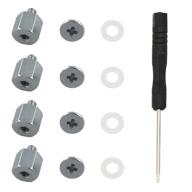
M.2 Screw Kit: Easy Mounting for NVMe SSDs on ASUS Motherboards

19 Review
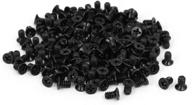
uxcell 3.5" HDD Screw Black 200pcs for Computer PC Case - Flat Phillips Head - 6#-32 - Hard Drive Fasteners

10 Review

Comprehensive 500pcs Laptop Screw Kit Set for 🔩 IBM HP Dell Lenovo Samsung Sony Toshiba Gateway Acer

12 Review
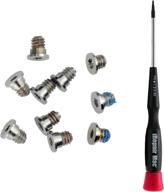
MacBook Retina 13-inch (A1425, A1502) and 🔩 15-inch (A1398) Bottom Case Screw Set with Pentalobe Screwdriver

11 Review


